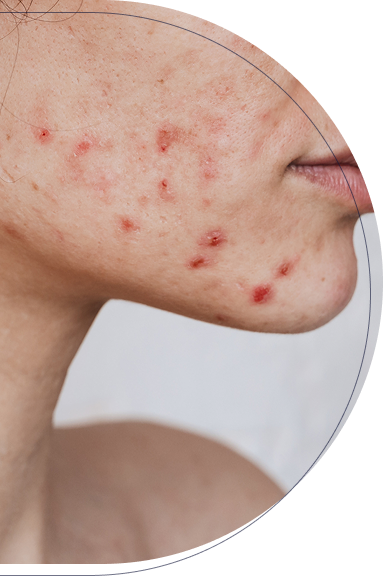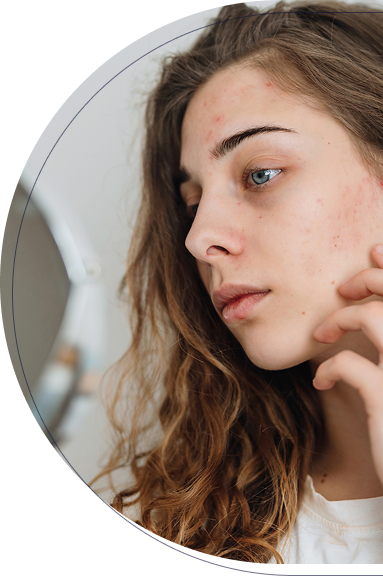The skin is the body's biggest organ, and we all know that how your skin looks affects your mood, confidence and overall sense of wellbeing. While acne and blemish-prone skin is usually associated with adolescence, many people continue to suffer with excess oil and imperfections well into adulthood.
Sebaceous glands are tiny glands found near the surface of your skin. The glands are attached to hair follicles, which are small holes in your skin that an individual hair grows out of. Sebaceous glands lubricate the hair and the skin to stop it drying out. They do this by producing an oily substance called sebum. In acne, the glands begin to produce too much sebum. The excess sebum mixes with dead skin cells and both substances form a plug in the follicle. If the plugged follicle is close to the surface of the skin, it bulges outwards, creating a whitehead. Alternatively, the plugged follicle can be open to the skin, creating a blackhead. Normally harmless bacteria that live on the skin can then contaminate and infect the plugged follicles, causing papules, pustules, nodules or cysts.
Spots caused by acne can be spilt into the following six categories:
- Blackheads – Tiny bumps usually black or yellow in colour that develop on the skin. A blackhead is essentially an open clogged hair follicle. The black colour is caused by oxidisation of the debris inside.
- Whiteheads – Small white blemishes with white heads. This type of spot is caused by sebum/oil blockages and dead skin cells plugging the follicles.
- Papules - Small to medium red bumps that feel tender or sore. This happens when the presence of bacteria under the skin has caused inflammation.
- Pustules – Similar to papules but with a build-up of pus inside. Pustules often look like large whiteheads and can be painful to touch. Squeezing them can lead to the development of acne scars so it is advisable to wait until the whitehead is visible.
- Nodules – Large inflamed bumps that are firm to the touch. They develop deep within the skin and often cause pain. Nodules should be treated by a dermatologist as over the counter medication may not be strong enough to clear them up.
- Cysts – A cyst is the most severe type of spot caused by acne. They are large lumps full of pus that look similar in appearance to boils. Cysts carry the greatest risk of acne scars.
Contact the clinic for a skin consultation with one of our skin care experts to transform your skin.




